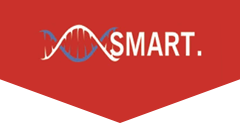Abstract
NTRODUCTION: Considering the significant amount of world population, there is a huge section of people who are bilingual or multilingual. On the other hand, many people do not have the knowledge or understanding of second language. Personality traits and along with individual differences play a huge role in second language acquisition. Every individual is unique and hence their way of learning or developing a completely new skill varies significantly. OBJECTIVES: The objectives of this paper were to explore how Second Language Acquisition (SLA) is related to various personality traits and to explore this relationship in terms of bi-directional link between the two. METHOD: The method of literature review was employed. FINDINGS: The findings of the present study indicate personality traits, motivation levels and perception of one’s self, other native speakers and of the language have a bi-directional relationship with SLA. Every individual approaches the SLA process differently and has a different success rate with it. It has also been hypothesised that music aids in understanding sound structure and in turn facilitates SLA. We further discuss how socio-cultural factors may play a role here. CONCLUSION: One of the main points that can be drawn from the present study is that SLA is mainly a matter of perception i.e., it is dependent on how an individual choses to view it. According to the demands of the 21st century, more language-oriented activities should be incorporated to make second language learning (SLL) an intellectually stimulating process. Additionally, we believe that there exists a bi-directional relationship between personality traits and SLA. Future directions for future researches are also suggested.
Recommended Citation
Tripathi, Mrs. Malabika; Dutta, Ria; Roy, Akanksha; and Sah, Malvika
(2024)
"Learning by Doing : A Systematic Review on Second Language Acquisition Corresponding to Personality Traits,"
International Journal of English Learning & Teaching Skills (IJELTS): Vol. 3:
Iss.
3, Article 10.
Available at:
https://research.smartsociety.org/ijelts/vol3/iss3/10

